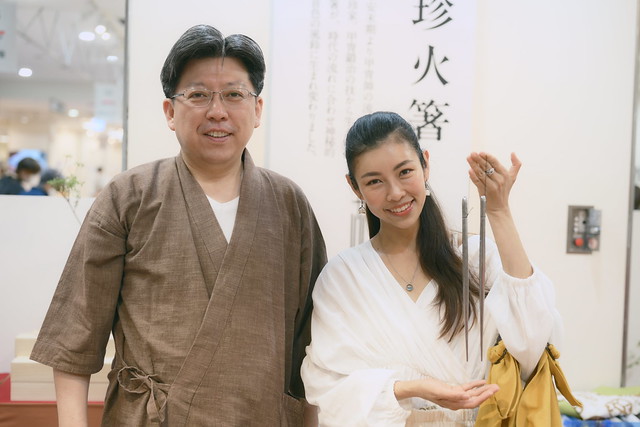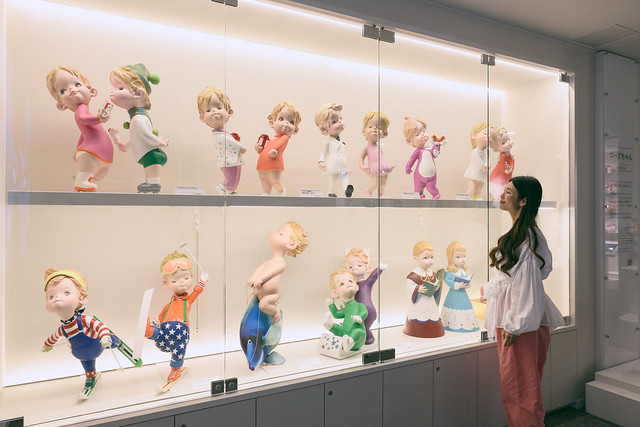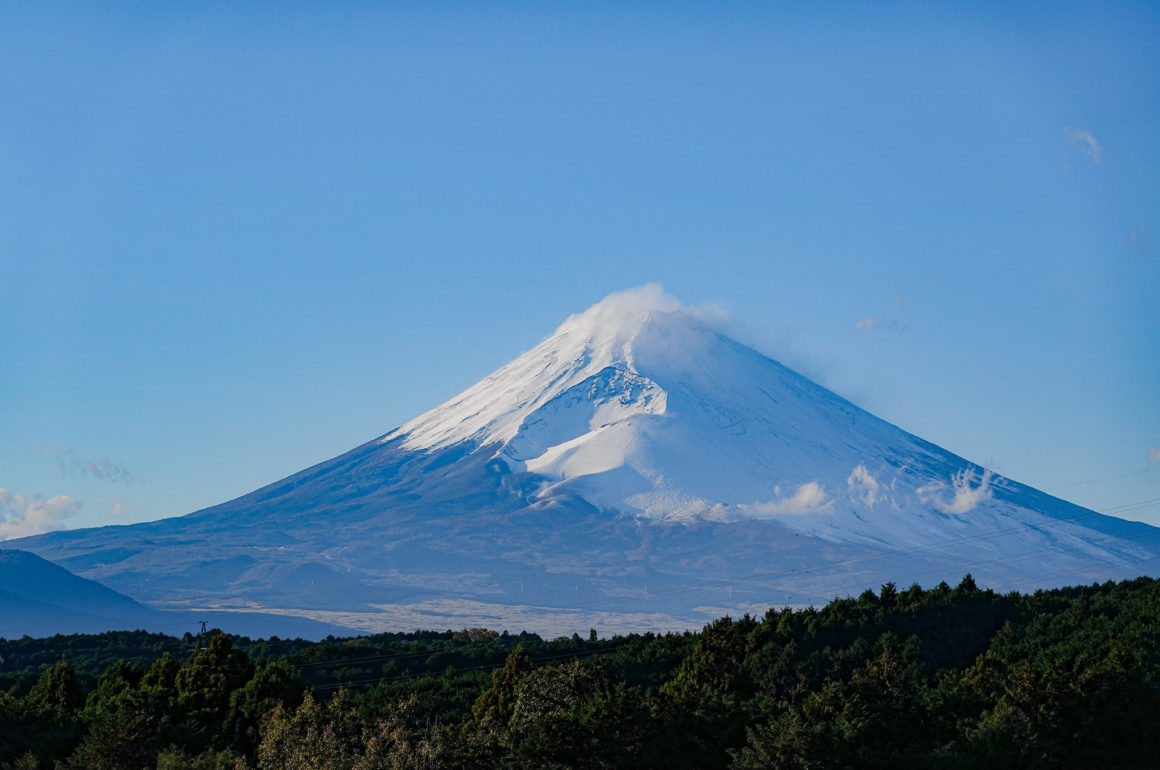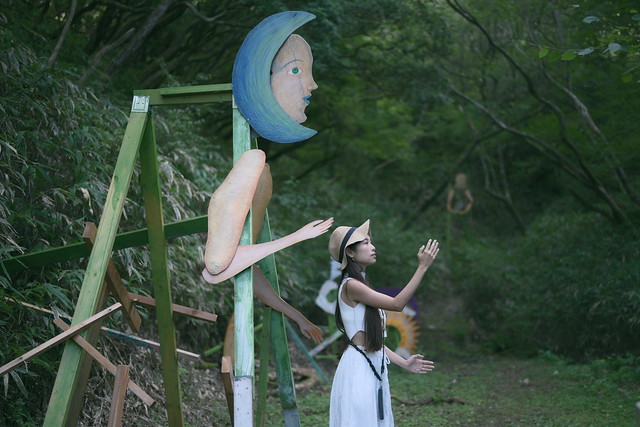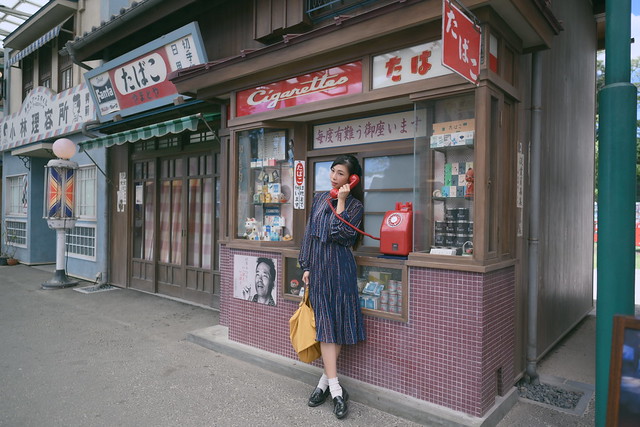This spring, I ventured off to Kagawa prefecture for more new discoveries. I have been to Kagawa in the past twice, in winter and summer. This time around I am back to witness this smallest prefecture of Japan dressed in all spring colors.

Read my previous articles on Kagawa here!
How to get to Kagawa Prefecture
Being the tiniest prefecture of Japan, it doesn’t make Kagawa any less attractive despite its size. In fact, I find myself wanting to go back again and again for its island adventures, pleasant climate and endless photogenic spots. Most of all, it is one of the places where one can enjoy the beautiful Seto Inland Sea – my favorite ocean in Japan.
Access to Takamatsu city, Kagawa’s capital city is surprisingly convenient! Both ANA and JAL operate daily flights from Haneda to Takamatsu, and if you prefer ground traveling, know that you can take the Tokaido Shinkansen from Tokyo or Osaka to Okayama Station and transfer to the JR Marine Liner rapid train to Takamatsu.
For those who look for something more unique, there’s even an overnight train called the Sunrise Seto night train that connects Tokyo with Takamatsu.
Let’s start our 3D2N journey to explore Kagawa’s hidden treasures!
DAY1
SHODOSHIMA ISLAND 小豆島
Kagawa is famous for its many island, particularly Naoshima which has recently gained international fame as the Art Island especially in relation to the Setouchi Triennale art festival and its iconic yellow pumpkin by Yayoi Kusama.
However the one island that I have always wanted to visit the most is Shodoshima Island, namely “small bean island”, isn’t it adorable? Read on to find out how this island is related to other kinds of “bean”, or bean-shaped specialties – olive and soy bean!
Access:

The only access to Shodoshima is via water by either ferry or high speed boat. There are a total of 6 ports on the island, connecting Takamatsu, Okayama, and even Kobe and Himeji! (4 of the 6 ports connect Takamatsu to Shodoshima, however one of of them has ceased operation by end of March, 2021.)
We took a ferry that costs only JPY700 per person from Takamatsu to Tonosho Port, and be greeted by a Taiyo-no-Okurimono (“Gift of the Sun”).
Regent in Olives
Shodoshima features various art installations from the Setouchi Triennale, and some exhibitions are made permanent, and Regent in Olives is one of them. In Japanese, “regent” is the word for the pompadour hairstyle, this monotone masterpiece by Hisakazu Shimizu peeks curiously out of a grove of olive trees.

The sculptures stands in a random olive orchard and is open for public to visit, free of charge. There’s a small shop nearby where a friendly farmer provide “regent” – pompadour wigs for guests to wear for photos, also, free of charge, just so that everyone who comes all the way to Shodoshima can bring back a piece of fun memory.

He even taught us the best poses, and earn absolutely nothing from this. Just Japanese hospitality at its finest.

So if you would like to return your appreciation for his generosity, remember to drop by his “shop” (which looks more like a garage/warehouse) and purchase a souvenir or two, and leave a lovely message!
Shodoshima Olive Park

This olive wonderland is definitely the island’s highlight.
Shodoshima is the birth place of olive cultivation in Japan, and there’s simply so much going on in there! Not only does it feature the “original olive tree” that is first grown in Shodoshima Island, there’s also a whole area dedicated to Ghibli’s Kiki’s Delivery Service, as it is used as the actual setting for the live-action remake of the popular animation, and they decided to just preserve some of the movie set structures for visitors, which has then become a widely popular instagenic spot nationwide.


The mediterranean vibe of the park certainly makes it very relatable to the scenes in Kiki’s Delivery Service. Mind you, the park serves as “Michi-no-eki”, a road station commonly found in Japan selling local produce, and guess what? Entrance is free of charge! Not only that, they even lend out free brooms for visitors to revisit popular scenes in the anime! Now all you need is to find a black kitty.
View this post on Instagram
Here’s a short Reel for how to take a super photogenic Kiki-inspired photo!

A walk down the path full of Greek vibe, you will find a monument that reads “The original olive tree” – the oldest olive tree born in Japan, which is over 100 years ago.

If you are not in a rush and in the mood for some art and craft fun, try looking through the olive bushes to find heart-shape olive leaves!

Pick your favorite leaf and have it laminated as a special memento for keepsake, or as a handmade message card for your loved ones!
Somen Noodle Splitting
I have tried udon making to disco music in Takamatsu before, so this time around I tried “somen noodle splitting”!

At “Nakabu-An”, a very popular somen noodle restaurant, you can experience splitting freshly made somen noodles the very traditional way, using a pair of ultra long chopsticks!

These incredibly long noodles are so elastic like rubber bands they stretch very well! A simple tour at the factory full of handmade charm also reveals that the total process of somen making – from mixing flour to drying the noodles in sunlight takes a whooping 13~14 hours!
After a very springy experience, you then can proceed to the restaurant and feast yourself on the freshest somen noodles eaten the simplest way – dipped in tsuyu sauce. One of the best I’ve had, I have to say!
View this post on Instagram
Here’s a short Reel of my somen-splitting experience!
Kankakei Gorge 寒霞渓

Kankakei Gorge is said to be one of the 3 most beautiful gorges in Japan, and it is not hard to see why, and I guess this photo alone explains it all. You can take the Kankakei Ropeway to the hill top for a gorge-ous view like this.
Overlooking the Seto Inland Sea from high above, the gorge is celebrated all-year-round with wild cherries embellishing the mountains in spring, adorning lush green in summer, dressed all in maple colors comes fall, and even get snow-crowned in winter!
If you must choose a season, know that the most popular timing to visit is autumn as the entire mountain turns red, attracting visitors from all over Japan. There are even maple-related souvenirs such as the Momiji Soda, a red bubbly beverage made using the essence of maple leaves!

I absolutely also love how thoughtful Kankakei is, always thinking of making the experience for their guests more memorable. There are many photo spots on the hill top, but this is my favorite – the heart-shaped pine tree!
I asked if the pine tree is purposely trimmed to be in a heart shape, and I was told that it grew naturally looking like a heart-shape coincidentally, so they just put a bench in front as a photo spot. How cute!
Yamaroku Soy Sauce Brewery
Many stories are to be told in Yamaroku, first, let me start with a book I read.

Many years ago, I was reading a book called “おいしいのもには理由がある” (literally “delicious food comes with a reason”) that features some of the finest ingredients in Japan made using the most natural methods, including mayonnaise, milk, miso, natto, etc. One of the chapters that left the deepest impression on me was the story about a soy sauce brewery in Shodoshima Island. And today, I made it to the exact place I so longed to visit.
Apparently, there are only 1% of shoyu brewery left in the entire Japan who are still using the traditional “kioke” (木桶)wooden barrel brewery method. 99% of the soy sauce we put on our food today are made by giant factories with imported soy beans. To make the plight worse, the only remaining wooden-barrel making company in Japan was also about to cease business due to an aging owner and low demand, and the true art of shoyu-making was quickly dying…
Until Yamamoto Yasuo, the 5th generation of Yamaroku decided that it was time he strived to preserve this precious tradition for the future generations to come by leading a nation-wide effort to renew the craft of making wooden barrels that will last for the next 100~150 years, which is the life span of a cedar barrel.
You can take a tour in the small warehouse, and will be greeted by a robust aroma of the fermented yeast in the century-old barrels as you approach the dark, cool alley.

I have never seen anything so strange. The giant barrels are filled with grey, whitish moss-like substance on the entire surface, just like a cedar tree is in the wild being surrounded by natural vine and moss, and you can tell the age of the barrels just by looking at how thick its “moss” is – bacteria that are attached to the barrel since the very first day which is essential in brewing soy sauce.
A further chat with Yamamoto San reveals many interesting stories – including how he believes that bacteria and yeast can feel one’s attention too. The more love and attention you give them, the harder they work to enhance the umami of the soy sauce. I love it, this is so Japanese.

You can also sample the soy sauce range they have, all very reasonably priced despite the insane massive effort in order to produce one small bottle. Soy sauce brewing only generates small profit despite the labor and cost. Keep in mind that a barrel of shoyu takes 3-4 years to mature before it could be sold, and a single cedar barrel costs as much as 5,000,000 yen, and the profit Yamaroku gets all goes into investing a new barrel to preserve for future generation.
I am really delighted to know that Yamaroku has finally been gaining international recognition for their true craftsmanship in making the finest shoyu in the world, with their products being used in some of the world’s most renowned restaurants!

If you are at Yamaroku, don’t forget to try everything on their menu, from grilled mochi with soy sauce to vanilla ice cream topped with soy sauce – so surprisingly delish, tastes like a fragrant salted caramel sauce! Of course, don’t forget to fill your basket with their products to support the undying passion and commitment of the Japanese shokunin.
Stay: Shimayado Mari 島宿真里

Shimayado Mari is a small lodge-style ryokan tucked in the middle of Shodoshima. Many visitors opt for day trips when it comes to the island, but I strongly encourage anyone who has can afford a little luxury of both time and spending to stay at least a night on one of the island’s most prestigious accommodations.

The exclusive lodge features 7 spacious room, and you will be pampered and spoilt with top notch Japanese hospitality the moment you step into the facility.

All the rooms come with a luxurious bathtub that has thermal spring gushing out fresh from the tap, so you can enjoy onsen right in the comfort of your own room.

If you prefer a more atmospheric bath time, there are also two private baths, including indoor and outdoor for their hotel guests to enjoy.

The most anticipated highlight of the stay at Mari is none other than the kaiseki-style dinner. Made with fresh ingredients harvested from the island and seafood from Seto Inland Sea, the experience was absolutely glorious.

The hero of the meal was the various soy sauce being served throughout the course. After visiting Yamaroku, I’m sure one has a whole new appreciation for shoyu! Featuring premium soy sauce from different breweries as well as their home-brewed “moromi” (fermented soy bean, just a step before the final product), one gets to enjoy the subtle flavor differences paired to a variety of dishes.

My favorite dish (other than “Olive Beef” which was pristine), is the simple “olive rice”, cooked over dashi and young green olives. You eat it by pouring Shodoshima-grown premium olive oil and a dash of shoyu on top. I cannot believe such a simple meal could be so delightful, leaving me wanting for more.
DAY 2
Nishinotaki Ryusuiji Temple 西の滝龍水寺

You may have heard of Shikoku Henro – the Shikoku Pilgrimage to complete a route visiting 88 temples. Interestingly, there are also 88 temples on Shodoshima Island itself and Nishinotaki Ryusui-ji Temple, a very mysterious spiritual spot sitting on top of a cliff is the 42th temple.

Cherry blossom in full bloom.

The hallway of Ryusuiji is actually inside a cave. Slightly spooky in a very spectacular way. You will pass through the hall and enter another structure on top of the cliff called the Goma Hall, where the ancient fire ritual called Gomataki (護摩焚き) is performed by the priest.

Visitors can request for a Gomataki for blessing and protection. You will pick a wooden block with a specific wish written on it, and the priest will then perform the ritual fire done in front of a statue of Fudo-Myoo – “The immovable wisdom king”, my favorite deity in Buddhism. Chants are made and prayers are consecrated to Fudo-Myoo while the wooden blocks are set on fire with occasional sprinkling of aromatic herbs, producing a strangely calming sight and therapeutic effect somehow.

There are many statues of the Fudo-Myoo in the temple complex and this is my favorite. It somehow reminds me of my favorite anime character ever -Rengoku Kyojuro, for those who watched Demon Slayer.

A super bonus of visiting the temple? This. And unobstructed view of the Seto Inland Sea. One will feel like a forgotten peace is awaken deep inside.

Also, spot the faint lines between the tiny islands? It is called the “Angel Road”, which we will be visiting in a while. Keep reading on!
Komame Shokudo こまめ食堂

Standing right by the Nakayama Senmaida Rice Field is an old rice mill converted into a cafe called Komame Shokudo, probably one of the most popular cafes on the island. How did I know? When I was there, there was a 2-hour waiting list to get in.

With a stunning view like this, I get why it is such a popular choice for an afternoon chill. The onigiri served in the restaurant is cooked using the rice grown right here. It’s the cafe’s concept to preserve the food culture of Shodoshima Island, offering local flavors to their guests.

The portion is huge, though, so go hungry!
Angel Road

If you are familiar with Kyoto’s Amanohashidate, Angel Road is like a mini version of it – a 500m long sandbar that connects mainland Shodoshima to three small islands, and only appears twice a day at low tide.
Even though it is a natural phenomenon that could be found in many places in the world, there’s a romantic saying behind it where the locals believe that couples who are in love who cross the path hand-in-hand will be blessed for happiness, making it an ideal dating spot for love birds.
A quick climb into the observation deck, where a Bell of Happiness is also located, reveals this scenic road from up above.

We were there at around 3pm, where the tide was retreating, as you can see the middle part of the sandbar is still submerged by the ocean.

When we made our way down, which is probably just 10 minutes later, the entire sandbar is visible and now has widened for comfortable walking. You can walk to the small island, make a wish and pray for it to come true.
That was the final destination we visited in Shodoshima. We took a speed boat at around 4pm bound for Takamatsu City.
TAKAMATSU CITY
Shikanoidesui 鹿の井出水

We are back to Takamatsu city on day 2, and since the entire city is painted in pastel pink, we went hunting for some good hanami spots.
Shikanoidesui, literally “Deer Well Water”, is sort of a secret hanami spot. Legend has it that almost a thousand years ago, when the area suffered a great drought, a deer appeared and dug out the ground, and spring water gushed out, saving the local plight, hence the name of this spot!
Cherry trees are blooming along the narrow river with colorful lanterns lit up at night, giving a vibe just like Nakameguro River in Tokyo albeit smaller insight, making it an ideal place for your cherry blossom photo collection!
Ritsurin Garden 栗林公園

Ritsurin Garden was another popular hanami spot, but this time around we were here to enjoy “Yozakura” – night cherry blossom! The Japanese have so many ways to enjoy the fleeting beauty of these mesmerizing petals, including seeing them in a different light, literally.

I have been to Ritsurin Garden twice, in winter and summer, and this is my first time witnessing its cherry blossom in full bloom!

Trivia: Did you know that Slowpoke is the official Pokemon mascot for Kagawa Prefecture? You can find collab items in many souvenir shops, including the one in Ritsurin Garden. Imagine Slowpoke Udon, senbei, wasanbon sweets…

In Japanese Slowpoke is called “Yadon”, which sort of rhyme with “udon” – Kagawa’s soul food. Make sure you stock up enough souvenirs for your friends who are Pokemon lovers!
DAY 3
Sanuki Kagari Temari 讃岐かがり手まり

For those who love traditional art and craft, Sanuki Kagari Temari will very likely blow your mind. Temari, literally “hand ball” in Japanese, used to be toys for the elites made of silk with lots of intricate designs. Came the Edo period where cotton was more commonly used, Temari started appearing in the form of cotton balls.
One of the impressive things about Temari is that it is made of completely natural materials. Cottons are dyed with natural colors derived from plants and the center of the ball is filled with rice husks.

Boiling of cotton threads. I almost mistook it as the somen noodles I split on the first day haha. I concluded that Kagawa Prefecture is very good at white, long stripy stuff haha.

Here are some designs of Sanuki Kagari which look incredibly intricate, it is hard to imagine just how much time and patience spent on one masterpiece!

Here at Sanuki Kagari Temari, you can participate in a workshop to learn a simple motif, and of course immerse yourself in the appreciation for Japanese traditional craft.
View this post on Instagram
Watch a short Reel of my temari-making experience.
Tonbiii: Indigo-dye and Uchiwa Making
Satisfied with your handmade Temari but looking for something else? Here’s another place you could go for some art and craft fun: Hatagoya Tonbiii.

Located in Marugame city, this tiny little workshop/gallery lets one enjoy hand dyeing indigo fabric and making various craft, including an “uchiwa” – a Japanese fan!

Shimizu San will be guiding your step-by-step from dyeing the fabric, pasting it on the bamboo frame and finally cutting it into an “uchiwa”! If you like, check out also their many beautiful art pieces, especially moon-themed items as Shizuma San has a penchant for anything lunar-inspired!
View this post on Instagram
Watch a short Reel of my uchiwa-making experience!
Ayauta Udon Restaurant
As you may have already known, Kagawa is so famous for its udon that it is nicknamed the “Udon Prefecture”!

When in Kagawa, udon is a must and you can find it pretty much at every corner in town! Also, what’s a better way than eating freshly made udon with the wheat fields spreading out right in front of you?

Just like Komame Shokudo that uses the rice harvested at the field nearby for its onigiri, Ayauta serves udon using wheat flour grown right here in Marugame city.
There are also plenty of topping and flavors for you to choose from so feast to your heart’s content!
Mt Shiudeyama 紫雲出山

The final place we are visiting is Shiudeyama, literally “mountain of the emerging purple clouds”. I was told that this place was such a well-kept secret spot until an international travel magazine featured as the most beautiful cherry blossom viewing spot in Japan in recent years, and is now the hottest spot for locals to visit during the sakura season.

There are about 1000 cherry trees on top of the mountain, including several lookout point where you get to enjoy both the pastel petals and the sparkling Seto Inland Ocean.

On the day of my visit, it was incredibly sunny, however the Shikoku region at that time was suffering from a bout of yellow dust storm from mainland China, lowering visibility and thus creating a really foggy view. Note that one a clear day, this view would be so much more breathtaking.

Mt Shiudeyama is still an unbelievably gorgeous spot and definitely made it into one of the top cherry viewing spot on my list.
I had an evening flight to catch so we couldn’t stay till sundown. Know that Shiudeyama is most well known for its dreamy sunset, I could only imagine a scenery painted with all sorts of pastel hue from the sky to the ocean with pink petals dotting all around. Next year, next year.
I hope you enjoy my guide to Kagawa, and see you next time!
PS: If you enjoy this article, it would mean the world if you could help me support Japan by buying a daikon!


